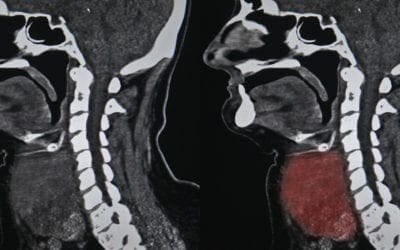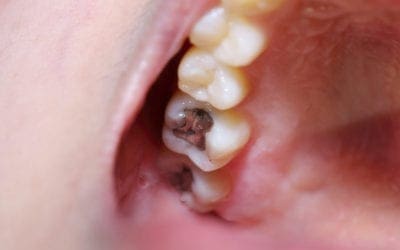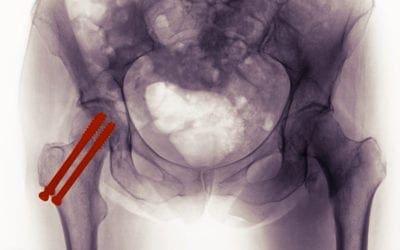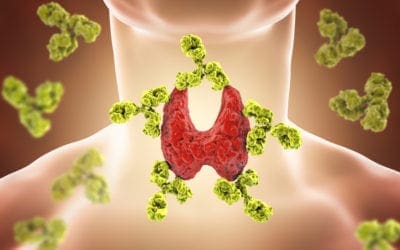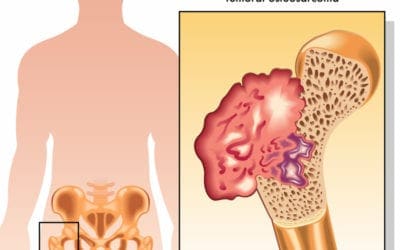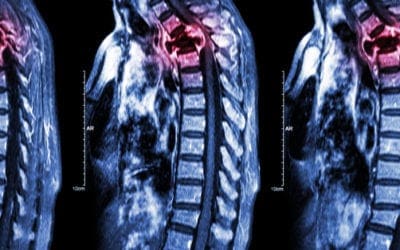Research
Here you will find evidence based information on fluoride and all aspects of water fluoridation including: water fluoridation and infant formula, support for water fluoridation, cost and cost effectiveness of water fluoridation, water fluoridation and the environment, the dental benefits of water fluoridation, the effects on general health, dental health, health inequalities, and dental fluorosis.
Costs And Savings Associated With Community Water Fluoridation In The United States
The most comprehensive study of US community water fluoridation program benefits and costs was published in 2001. This study provides updated estimates using an economic model that includes recent data on program costs, dental caries increments, and dental treatments....
Association between low fluoride exposure and children’s intelligence: a meta-analysis relevant to community water fluoridation
Previous meta-analyses have mainly focused on studies conducted in endemic fluorosis areas with relatively high fluoride concentrations. These are impoverished rural communities in China, India, and Iran, and the findings cannot be generalised to developed countries. Therefore, we investigated the association between fluoride concentrations relevant to community water fluoridation and children’s cognition measured with IQ scores by synthesising effect sizes reported in observational studies.
Prenatal exposure to fluoride and neuropsychological development in early childhood: 1-to 4 years
Effect on Early Childhood Caries (2019)
Fluoridated Water Modifies Effect of Breastfeeding on Dental Caries
Breastfeeding is important for health and development. Yet, the interaction between breastfeeding duration and usage of fluoridated water on caries experience has not been investigated. This study examined exposure to fluoridation as an effect modifier of the association between breastfeeding duration and caries. The 2012 to 2014 national population-based study of Australian children involved parental questionnaires and oral epidemiological assessment. Children were grouped by parent-reported breastfeeding duration into minimal (none or <1 mo), breastfed for 1 to <6 mo, breastfed for 6 to 24 mo, and sustained (>24 mo). Residential history and main water source used for the first 2 y of life were collected to group children into exposed (WF) and nonexposed (NF) to fluoridation. Socioeconomic status, infant formula feeding, and sugar-sweetened beverage (SSB) consumption data were collected.
Consequences of water fluoridation cessation in Juneau, Alaska
These results expand our understanding of caries epidemiology under CWF cessation conditions and reaffirm that optimal CWF exposure prevents dental decay. These findings can offer fiscal estimates of the cost burden associated with CWF cessation policies and help decision-makers advance oral health, prevent dental caries, and promote equity in oral health outcomes.
Bashash ADHD Review
synopsis bashash 2018 prenatal fluoride and adhd.pdfDownload
Water Fluoridation and Dental Caries in U.S. Children.. (Slade 2018)
Abstract
Fluoridation of America’s drinking water was among the great public health achievements of the 20th century. Yet there is a paucity of studies from the past 3 decades investigating its dental health benefits in the U.S. population. This cross-sectional study sought to evaluate associations between availability of community water fluoridation (CWF) and dental caries experience in the U.S. child and adolescent population. County-level estimates of the percentage of population served by CWF (% CWF) from the Centers for Disease Control and Prevention’s Water Fluoridation Reporting System were merged with dental examination data from 10 y of National Health and Nutrition Examination Surveys (1999 to 2004 and 2011 to 2014). Dental caries experience in the primary dentition (decayed and filled tooth surfaces [dfs]) was calculated for 7,000 children aged 2 to 8 y and in the permanent dentition (decayed, missing, and filled tooth surfaces [DMFS]) for 12,604 children and adolescents aged 6 to 17 y. Linear regression models estimated associations between % CWF and dental caries experience with adjustment for sociodemographic characteristics: age, sex, race/ethnicity, rural-urban location, head-of-household education, and period since last dental visit. Sensitivity analysis excluded counties fluoridated after 1998. In unadjusted analysis, caries experience in the primary dentition was lower in counties with ≥75%CWF (mean dfs = 3.3, 95% confidence limits [CL]=2.8, 3.7) than in counties with <75%CWF (mean dfs =4.6, 95%CL=3.9, 5.4), a prevented fraction of 30% (95%CL = 11, 48). The difference was also statistically significant, though less pronounced, in the permanent dentition: mean DMFS (95%CL) was 2.2 (2.0, 2.4) and 1.9 (1.8, 2.1), respectively, representing a prevented fraction of 12% (95%CL=1, 23). Statistically significant associations likewise were seen when %CWF was modeled as a continuum, and differences tended to increase in covariate-adjusted analysis and in sensitivity analysis. These findings confirm a substantial caries-preventive benefit of CWF for U.S. children and that the benefit is most pronounced in primary teeth.
Response To Fluoridation Opponents Criticisms of 2017 NTP Study
In the below letter to the editor of Neurotoxicity Research, Dr. Jean Harry, lead contact researcher for the 2017 McPherson, et al NTP study, responds to criticisms made by fluoridation opponents: July 5, 2018 Dear Dr. Kostrzewa I am writing in response to a letter...
National Toxicology Program: An Evaluation of Neurotoxicity Following Fluoride Exposure from Gestational Through Adult Ages in Long-Evans Hooded Rats
No exposure-related pathology was observed in the heart, liver, kidney, testes, seminal vesicles, or epididymides. Mild inflammation in the prostate gland was observed at 20 ppm F−. No evidence of neuronal death or glial activation was observed in the hippocampus at 20 ppm F−.
A Canadian Population-based Study of the Relationship between Fluoride Exposure and Indicators of Cognitive and Thyroid Functioning; Implications for Community Water Fluoridation
Abstract: Concerns exist regarding potential harms of community water fluoridation. The study objective was to examine the association between fluoride exposure and indicators of two health outcomes for which concerns have been expressed, cognitive and thyroid...
Can Fluoridation Affect Lead (II) In Potable Water? Hexafluorosilicate and Fluoride Equilibria In Aqueous Solution
Overall we conclude that no credible evidence exists to show that water fluoridation has any quantifiable effects on the solubility, bioavailability, bioaccumulation or reactivity of lead (0) or lead (II) compounds. The governing factots are the concentrations of a...
Blood Lead Concentrations in Children and Method of Water Fluoridation in the United States, 1988-1994
Our analysis does not offer support for the hypothesis that silicofluorides in community water systems increase PbB concentrations in children. On the other hand, given the limitations of our data, our analyses cannot refute a possible link between water fluoridation...
Chemistry and Bioavailability Aspects of Fluoride in Drinking Water
1. Hexafluorosilicate added to fluoridate water is effectively 100% dissociated to form fluoride ion under water treatment conditions. Therefore in terms of chemistry and bioavailability there is absolutely no difference between added and “natural” fluoride. 2. The...
Economic Evaluation of Community Water Fluoridation. A Community Guide Systematic Review
Abstract Context: A recently updated Community Guide systematic review of the effectiveness of community water fluoridation once again found evidence that it reduces dental caries. Although community water fluoridation was found to save money in a 2002 Community Guide...
Effects of fluoridation of community water supplies for people with chronic kidney disease
On the basis of the available evidence, Kidney Health Australia has developed the following position statement regarding fluoridation of community water supplies: There is no evidence that consumption of optimally fluoridated drinking water increases the risk of...
Water Fluoridation and the Association of Sugar-Sweetened Beverage Consumption and Dental Caries in Australian Children
Results. Children who brushed their teeth less often and were older, male, of low SES, from rural or remote areas consumed significantly more SSBs. Caries was significantly associated with greater SSB [sugar-sweetened beverages] consumption after controlling...
Genomic responses in mouse models poorly mimic human inflammatory diseases
A cornerstone of modern biomedical research is the use of mouse models to explore basic pathophysiological mechanisms, evaluate new therapeutic approaches, and make go or no-go decisions to carry new drug candidates forward into clinical trials. Systematic studies...
The Fluoride Content of Infant Formulas Available in 1985
Abstract The purpose of this study was to measure the fluoride content of several brands of commercially available infant formulas obtained from various geographic locations in the United States. Fluoride determinations were accomplished using a modification of the...
Cognitive Impairment and Risk Factors in Elderly People Living in Fluorosis Areas in China
Residents living in fluorosis areas generally experienced long-term exposure to excessive fluoride in drinking water. The adverse effects of high fluoride levels on the nervous system have been studied; however, the effect of fluoride exposure on cognitive functions...
Effect of Reduced Fluoride Intake By Mice on Haemocrit Values
Abstract: Many attempts to demonstrate the dietary essentiality of fluoride have yielded equivocal results and none of the studies have connected fluoride to a specific metabolic deficiency (refs. 1-5 and personal communication from K. Schwartz). Undoubtedly, these...
Fertility Impairment in Mice on a Low Fluoride Intake
Abstract: Female mice maintained on a low fluoride diet over two generations showed a progressive decline in litter production. Mice receiving the same diet supplemented with fluoride reproduced normally and at consistent intervals. Addition of fluoride to the intake...
Fluoride exposure and indicators of thyroid functioning in the Canadian population: implications for community water fluoridation
Background There are concerns that altered thyroid functioning could be the result of ingesting too much fluoride. Community water fluoridation (CWF) is an important source of fluoride exposure. Our objectives were to examine the association between fluoride exposure...
The Effects of Fluoride In The Drinking Water
Fluoridation of the drinking water is a public policy whose aim is to improve dental health. Although the evidence is clear that fluoride is good for dental health, concerns have been raised regarding potential negative effects on cognitive develop- ment. We study the...
Fluoride exposure during pregnancy and its effects on childhood neurobehavior: a study among mother-child pairs from Mexico City, Mexico
Overall, this investigation found no evidence of a detectable adverse outcome on offspring neurobehavioral development associated with maternal fluoride exposure during pregnancy. Fluoride measured in pregnancy urine and plasma was not significantly associated with...
Associations of Community Water Fluoridation with Caries Prevalence and Oral Health Inequality in Children
This study aimed to confirm the association between the community water fluoridation (CWF) programme and dental caries prevention on permanent teeth, comparing to a control area, neighbouring population without the programme, and verifying whether the programme can...
Access to Fluoridated Water and Adult Dental Caries A Natural Experiment
Participants living between 50% and 75% and <50% of their lives in fluoridated areas presented a decayed and filled teeth mean ratio of 1.34 (95% CI, 1.02–1.75) and 1.47 (95% CI, 1.05–2.04) higher than those with residential access to fluoridated water >75% of...
Overwhelming Consensus
There is overwhelming consensus that there is no valid evidence linking water fluoridation to ANY cancer. 1) A review of worldwide studies by The International Agency for Research on Cancer (IARC) concluded there was no evidence of an increase in cancer rates...
Fluoride exposure and reported learning disability diagnosis among Canadian children: Implications for community water fluoridation
Abstract: OBJECTIVES: Recent studies have connected increased fluoride exposure with increased risk of neurodevelopmental-related outcomes, such as ADHD (attention deficit hyperactivity disorder) and lower IQ in children. Our primary objective was to examine the...
Fluoride exposure in public drinking water and childhood and adolescent osteosarcoma in Texas
Results: Three hundred and eight osteosarcoma cases, 598 leukemia controls, and 604 CNS tumor controls met selection criteria and were assigned a corresponding PWS fluoride level. PWS fluoride level was not associated with osteosarcoma, either in a univariable...
Evidence-based clinical recommendations regarding fluoride intake from reconstituted infant formula and enamel fluorosis: a report of the American Dental Association Council on Scientific Affairs.
This article presents evidence-based clinical recommendations regarding the intake of fluoride from reconstituted infant formula and its potential association with enamel fluorosis. The recommendations were developed by an expert panel convened by the American Dental Association (ADA) Council on Scientific Affairs (CSA). The panel addressed the following question: Is consumption of infant formula reconstituted with water that contains various concentrations of fluoride by infants from birth to age 12 months associated with an increased risk of developing enamel fluorosis in the permanent dentition?
Equity in children’s dental caries before and after cessation of community water fluoridation: differential impact by dental insurance status and geographic material deprivation
Abstract
Background: One of the main arguments made in favor of community water fluoridation is that it is equitable in its impact on dental caries (i.e., helps to offset inequities in dental caries). Although an equitable effect of fluoridation has been demonstrated in cross-sectional studies, it has not been studied in the context of cessation of community water fluoridation (CWF). The objective of this study was to compare the socio-economic patterns of children’s dental caries (tooth decay) in Calgary, Canada, in 2009/10 when CWF was in place, and in 2013/14, after it had been discontinued.
Fluoridated Water: Safe and Effective for Preventing Tooth Decay
Q: What about opponents’ claim that fluoride causes cancer? 1. Research offers strong evidence that this claim is unsupported speculation. • A National Cancer Institute fact sheet reports: “Many studies, in both humans and animals, have shown no association between...
Critique of the review of ‘Water fluoridation for the prevention of dental caries’ published by the Cochrane Collaboration in 2015
The Cochrane Review on water fluoridation for the prevention of dental caries was published in 2015 and attracted considerable interest and comment, especially in countries with extensive water fluoridation programmes. The Review had two objectives: (i) to evaluate...
Effects of Fluoridated Water on Dental Caries in Australian Adults
In this nationally representative sample of Australian adults, caries-preventive effects of water fluoridation were at least as great in adults born before widespread implemen- tation of fluoridation as after widespread implementation of fluoridation.
Menu Reexamination of Hexafluorosilicate Hydrolysis by 19F NMR and pH Measurement
Abstract: The dissociation of hexafluorosilicate has been reinvestigated due to recent suggestions that fluorosilicate intermediates may be present in appreciable concentrations in drinking water. 19F NMR spectroscopy has been used to search for intermediates in the...
Measuring the short-term impact of fluoridation cessation on dental caries in Grade 2 children using tooth surface indices
Abstract – Objectives: To examine the short-term impact of fluoridation cessation on children’s caries experience measured by tooth surfaces. If there is an adverse short-term effect of cessation, it should be apparent when we focus on smooth tooth surfaces, where...
Health effects of water fluoridation: An evidence review 2015
The authors reviewed scientific evidence to inform Ireland Department of Health with regard to any impact, positive and or negative, on the general health of those exposed to community water fluoridation at the levels of 0.4-1.5 ppm. Based on the existing literature...
Water fluoridation and hypothyroidism results of this study need much more cautious interpretation
The biggest problem with this paper, however, is in the interpretation which puts far too much weight on such weak evidence. The approach used is notoriously unreliable as a way of identifying independent associations and the lack of a clearly established prior...
Warren Critique of Peckham
The authors concluded that fluoride exposure should be considered as a contributing factor to hypothyroidism and that the study results raised concerns about the validity of community water fluoridation as a safe public health measure.
FLUORIDATION OF DRINKING WATER AND SUBSEQUENT CANCER INCIDENCE AND MORTALITY
In response to concerns over the possible carcinogenicity of fluoride compounds added to drinking water raised by the results of a recent animal experiment, we evaluated 36 years of US.cancer mortality data and 15 years of cancer incidence data from two...
Dental Health of Primary School Children
In the 3 areas the proportion of children who received a dental examination varied; 77.5% (n = 825) for the fluoridated area, 80.1% (n = 781) for the pre-fluoridated area and 55.3% (n = 523) for the non-fluoridated area. The mean dmft was 1.40 for the fluoridated...
Community Water Fluoridation and Intelligence: Prospective Study in New Zealand
Results: No significant differences in IQ because of fluoride exposure were noted. These findings held after adjusting for potential confounding variables, including sex, socioeconomic status, breastfeeding, and birth weight (as well as educational attainment for...
Is fluoride a risk factor for bone cancer? Small area analysis of osteosarcoma and Ewing sarcoma diagnosed among 0-49-year-olds in Great Britain, 1980-2005.
Results: The study analysed 2566 osteosarcoma and 1650 Ewing sarcoma cases. There was no evidence of an association between osteosarcoma risk and fluoride in drinking water [relative risk (RR) per one part per million increase in the level of fluoride = 1·001; 90%...
Estimated Drinking Water Fluoride Exposure and Risk of Hip Fracture A Cohort Study
Overall, we found no association between chronic fluoride exposure and the occurrence of hip fracture. The risk estimates did not change in analyses restricted to only low-trauma osteoporotic hip fractures. Chronic fluoride exposure from drinking water does not seem...
Fluoridation and Dental Caries Severity in Young Children Treated under General Anaesthesia
Research Design: Consecutive clinical case series: clinical details (diagnoses and the treatments provided) were recorded for children who had received comprehensive dental care under GA between 2000 and 2009. Age, gender, ethnicity, socio-economic status and...
Caries status in 16 year-olds with varying exposure to water fluoridation in Ireland
Conclusion: The survey provides further evidence of the effectiveness in reducing dental caries experience up to 16 years of age. The extra intricacies involved in using the Percentage Lifetime Exposure method did not provide much more information when compared to the...
Decline in dental caries among 12-year-old children in Brazil, 1980-2005.
Conclusion: Data showed a significant decrease in dental caries across the entire country, with an average reduction of 25% occurring every 5 years. General trends indicated that a reduction in DMFT index values occurred over time, that a further reduction in DMFT...
Effectiveness of water fluoridation in caries prevention.
Conclusion: Fewer studies have been published recently. More of these have investigated effect at the multi-community, state or even national level. The dmf/DMF index remains the most widely used measure of effect. % CR were lower in recent studies, and the ‘halo’...
The association between social deprivation and the prevalence and severity of dental caries and fluorosis in populations with and without water fluoridation
Conclusion: The results of this study support existing work suggesting water fluoridation together with the use of fluoridated dentifrice provides improved caries prevention over the use of fluoridated dentifrice alone. The social gradient between caries and...
Fluoride in drinking water and osteosarcoma incidence rates in the continental United States among children and adolescents
Results: We found no sex-specific statistical differences in the national incidence rates in the younger groups (5–9, 10–14), although 15–19 males were at higher risk to osteosarcoma than females in the same age group (p < 0.001). Sex and age group specific...
An assessment of bone fluoride and osteosarcoma.
The association between fluoride and risk for osteosarcoma is controversial. The purpose of this study was to determine if bone fluoride levels are higher in individuals with osteosarcoma. Incident cases of osteosarcoma (N = 137) and tumor controls (N = 51) were...
Osteosarcoma Incidence on the Island of Ireland
The incidence of osteosarcoma in Northern Ireland was compared with that in the Republic of Ireland to establish if differences in incidence between the two regions could be related to their different drinking water fluoridation policies. Data from the Northern...
Effects of Water Fluoridation on the Human Skeleton
Many decades of epidemiological studies have shown minimal evidence of any effects of fluoride administration on bone, and it is therefore very unlikely that municipally fluoridated water affects adults with healthy bone. In this study, no effects of fluoride on...
British Fluoridation Society Statement (January 2006) on the absence of an association between water fluoridation and thyroid disorders.
This statement has been reviewed and endorsed by the British Thyroid Association (BTA); however, the BTA would recommend that appropriate monitoring of thyroid status should be considered in areas where fluoridation is introduced to enable an ongoing epidemiological...
Dental caries and enamel fluorosis among the fluoridated and non-fluoridated populations in the Republic of Ireland in 2002
Conclusion: Caries levels are lower among children with fluoridated domestic water supplies. Decay levels are much lower in 2002 than they were in 1984 and in the 1960s. The oral health of the less well off is worse than that of the rest of the population. The...
Effect of Long-Term Exposure to Fluoride in Drinking Water on Risks of Bone Fractures
It is concluded that long-term fluoride exposure from drinking water containing >4.32 ppm increases the risk of overall fractures as well as hip fractures. Water fluoride levels at 1.00 –1.06 ppm decrease the risk of overall fractures relative to negligible...
The prevalence of dental caries and fluorosis in Japanese communities with up to 1.4 ppm of naturally occurring fluoride
Conclusion: The prevalence of dental caries was inversely related and the prevalence of fluorosis was directly related to the concentration of fluoride in the drinking water. The mean DMFS in the communities with 0.8 to 1.4 ppm fluoride was 53.9 percent to 62.4...
Fluoride Exposure and Childhood Osteosarcoma: A Case-Control Study
Fluoride exposure does not increase the risk of osteosarcoma and may be protective in males. The protective effect may not be directly due to fluoride exposure but may be due to other factors associated with good dental hygiene. There is also a biologic plausability...
Osteosarcoma, seasonality, and environmental factors in Wisconsin, 1979-1989.
Proxy exposure measures and readily available data from the Wisconsin Cancer Reporting System were used to contrast 167 osteosarcoma cases with 989 frequency-matched cancer referents reported during 1979-1989. Differences in potential exposure to water-borne radiation...
Osteosarcoma, seasonality, and environmental factors in Wisconsin, 1979-1989.
Proxy exposure measures and readily available data from the Wisconsin Cancer Reporting System were used to contrast 167 osteosarcoma cases with 989 frequency-matched cancer referents reported during 1979-1989. Differences in potential exposure to water-borne radiation...
Dental fluorosis and caries prevalence in children residing in communities with different levels of fluoride in the water
Conclusion: The ingestion of water containing 1 ppm or less fluoride during the time of tooth development may result in dental fluorosis, albeit in its milder forms. However, in these times of numerous products containing fluoride being available, children ingesting...
Efficacy of preventive agents for dental caries. Systemic fluorides: water fluoridation.
Abstract: The effectiveness of fluoridation has been documented by observational and interventional studies for over 50 years. Data are available from 113 studies in 23 countries. The modal reduction in DMFT values for primary teeth was 40-49% and 50-59% for permanent...
Is There A Link Between Fluoridated Water and Osteosarcoma?
Conclusion: In a case-control study of osteosarcoma patients and hospital-based matched controls, the ingestion of fluoridated water was not found to be a risk factor for osteosarcoma. Hence, no link was found between the occurrence of osteosarcoma and ingestion of...
Fluoridation of Water and Cancer: A Review ofthe Epidemiological Evidence Report of the Working Party
We conclude that there is no substantiated evidence from studies of human populations that fluoride or fluoridation causes cancer, or increases mortality from cancer, whether for cancer as a whole or for cancer at individual sites. The notion that fluoridation and...


















